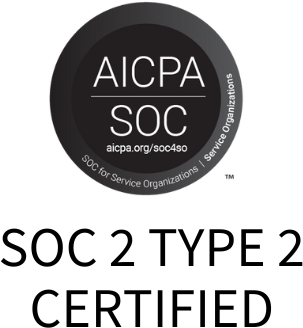RHC Webinar Series: The Pros of becoming an RHC
Advantages of Embracing RHC Status
Let’s explore the substantial benefits in terms of patient care.
Patient Care Benefits:
- Comprehensive Care: RHCs place a strong emphasis on community care coordination, fostering collaboration among various healthcare providers, such as physicians, nurses, home health agencies, and nursing homes. This collaborative approach results in more holistic and well-rounded patient care within the community.
- Diverse Services: RHCs are remarkably versatile when it comes to the array of services they can offer. This encompasses preventive medical visits, home care, telehealth services, assisted living support, and even hospice care. This flexibility enables RHCs to cater to a wide range of patient needs and expand their service portfolio. For instance, physicians or nurse practitioners can make visits to nursing homes under the RHC umbrella, compensated at an all-inclusive rate.
- Preventative Examinations: Preventive exams play a pivotal role in reducing patients’ risk of illness and mitigating the likelihood of hospitalization, thereby easing the financial strain on both healthcare institutions and individuals. They enhance community care by allowing patients to address medical issues before resorting to emergency room visits.
- Chronic Care Management: RHCs are well-suited for effectively managing patients with chronic conditions like diabetes. Their patient-centered approach and focus on comprehensive care contribute to improved long-term health outcomes. Visit notes and medication information are stored in a patient portal, facilitating reference and continuity of care.
- Pharmacy Services: Many RHCs provide on-site pharmacy services or collaborate with local pharmacies. This can enhance medication adherence and offer greater convenience to patients.
- Telehealth Visits: RHCs leverage telehealth technology to broaden patient access, making healthcare services accessible to those who might otherwise struggle to travel for in-person appointments.
- Enhanced Community Care: By coordinating care across all local facilities, RHCs contribute to keeping patients healthier and reducing emergency room visits. Offering walk-in clinic appointments helps patients avoid higher costs associated with urgent care.
Want to learn more?
Watch the full webinar on if you should become a rural health clinic and Learn more about what Azalea does for rural health on our website.
Video Transcript
All of the services for RHC from Medicare and Medicaid are paid at an all inclusive rate. Just meaning, basically, another word for that would be a per diem rate. And it’s based on the calculation obtained from your cost.
19:13
So, you get that rate set aside for you. It does include a wide range of E and M codes and qualifying visits that you can do.
19:23
In your RHC, you can do things like preventative medical visits. And that’s actually encourage that you do those for your patients, that you do the preventative medical exam, so that hopefully, we can find a problem before it becomes intense for a patient. Also, we can do face-to-face, physician, and non visit. It’s non physician visits. They have to be face-to-face. A patient coming in just for an injection, but not seeing a provider is not considered an encounter and will not be paid an all inclusive rate. That’s a question I get all the time. And that cannot be part of it.
20:05
Although your physicians and your nurse practitioners can see patients in your nursing home and that can be part of an RHC visit and paid at the all inclusive rate.
20:16
They can also, if they choose to, I don’t know, many that do this but they can go to the scene of an accident and render services there. Sometimes in the rural communities, if we only have 1 2 EMTs and everybody’s out, that may be something that they do as well as doing home visits.
20:36
There are a few RHCS out in some of the really rural areas Now that still do home visits. Some of the physicians and the nurse practitioners go out and they can go out and do that. They can see a patient there.
20:50
They can also do residential or assisted living homes. They can go in on a routine basis and see those patients.
20:59
We can use a service called Chronic Care Management, which is great. It helps us, too.
21:05
Take care of our patients, manage their needs for patients that are chronically ill.
21:10
Like eel like our diabetics are a really good example of that. We can keep control over their blood sugars. We can talk to them, or we can do things like going over their medications with them.
21:23
Oftentimes, when a patient would come to come to a physician’s office, there’ll be a little bit apprehensive or anxious, and they won’t remember what the physician says and they get home and they’re not sure how to take their medication. So we can use the things like our chronic care visit center interaction with them to help them make sure that they get the medication they need.
21:47
We can do telehealth visits.
21:50
And those are very good for people who are Shanahan who can’t get into the office. And then, also, we’ve just a short, while back during the covered era, we’ve added hospice. And so they can do some of the hospice visits.
22:06
The one thing to keep in mind, though, is that this does require a unique, new, unique billing requirement, meaning that we have to be able to do 1500. And you’d be a force for a lot of these things.
22:19
So, we do have to make sure that we have that capability with our billing system.


